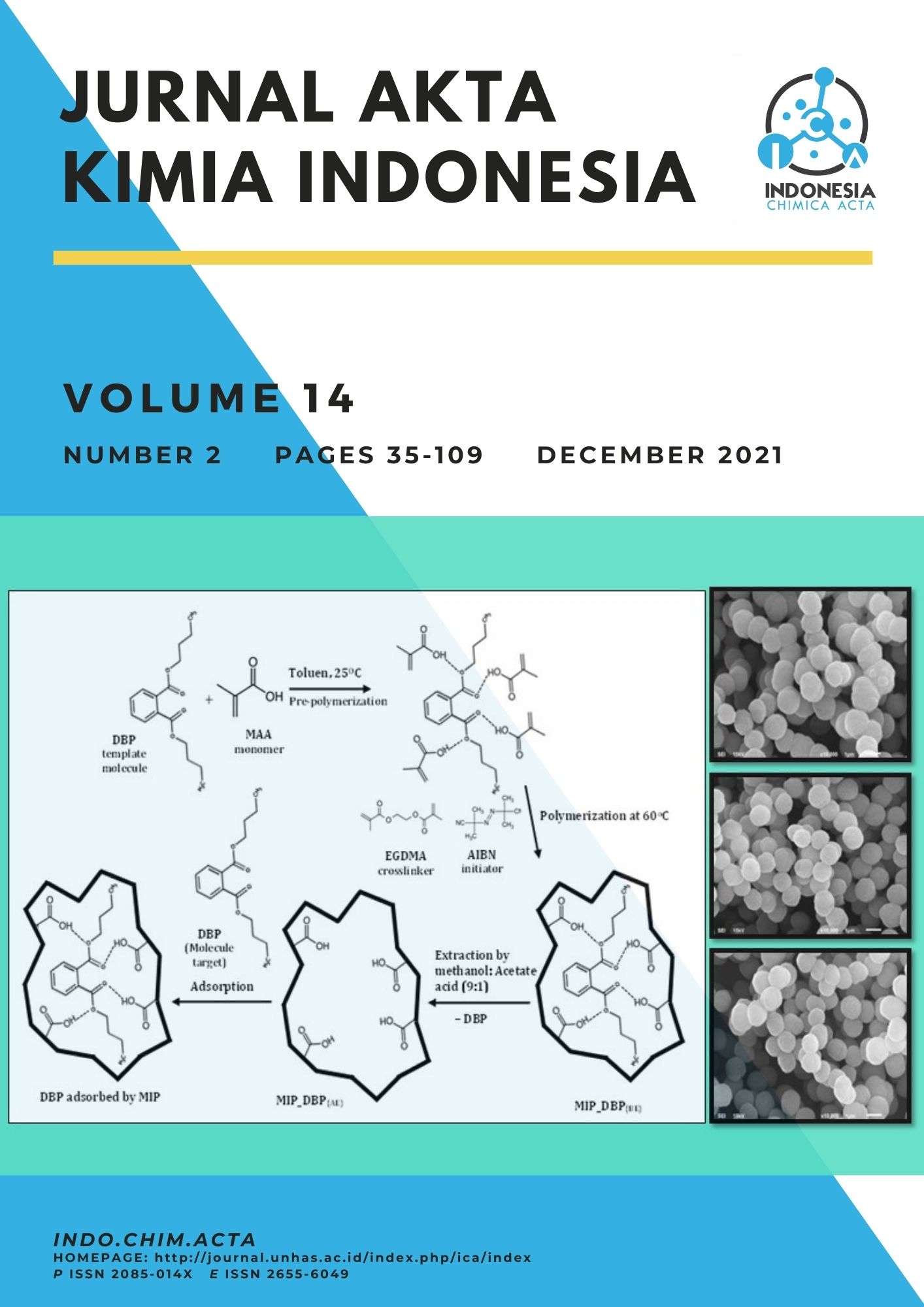Performance Analysis of biosorption of Heavy Metal and Biodegradation PAH of Isolates Marine Sponges Symbiont Bacteria
Abstract
Heavy metal pollutants and polycyclic aromatic hydrocarbon contaminants, also known as PAHs, need attention from related parties, considering that their use is very wide, as well as their relatively high natural releases. Careless and uncontrolled handling has the potential to cause problems for creatures, especially in marine ecosystems. The aim of the study was to determine the performance of marine sponge microsymbiont isolates in heavy metal biosorption and PAH biodegradation. The method applied, pure isolates of marine sponge symbionts were cultured on NA media. The suspension of isolates was made using physiological 0.9 % NaCl solution. Suspension adapted 24 hours. The isolate suspension was interacted with heavy metals Cd2+ and As3+, each with a concentration of 100 ppm and naphthalene and anthracene with a concentration of 1000 ppm. Interaction time of 5, 10, 15, and 20 days. Results of the analysis showed the biosorption capacity of the bacterial isolate Sp6.B2 to Cd2+ = 83.190 %, while Sp8.B1 = 82.240 %. Biosorption performance of Sp6.B2 isolates against As3+ = 99.890 %, while Sp8.B1 = 99.894 %. The biodegradation performance of Sp6.B2 isolates had a higher aggressiveness towards naphthalene and anthracene test contaminants than Sp8.B1 isolates. These results indicate that the biosorption performance of Sp6.B2 ˃ Sp8.B1 isolates against Cd2+ contaminants and vice versa Sp6.B2 ˂ Sp8.B1 against As3+ biosorption, while the biodegradation performance of Sp6.B2 ˃ Sp8.B1 isolates both against naphthalene and anthracene test contaminants
Full text article
Authors
Copyright (c) 2021 Ismail Marzuki, Asdar, Hardimas

This work is licensed under a Creative Commons Attribution-ShareAlike 4.0 International License.
This is an open access journal which means that all contents is freely available without charge to the user or his/her institution. Users are allowed to read, download, copy, distribute, print, search, or link to the full texts of the articles in this journal without asking prior permission from the publisher or the author.
Jurnal Akta Kimia Indonesia (Indonesia Chimica Acta) operates a CC BY-SA 4.0 © license for journal papers. Copyright remains with the author, but Jurnal Akta Kimia Indonesia (Indonesia Chimica Acta) is licensed to publish the paper, and the author agrees to make the article available with the CC BY-SA 4.0 license. Reproduction as another journal article in whole or in part would be plagiarism. Jurnal Akta Kimia Indonesia (Indonesia Chimica Acta) reserves all rights except those granted in this copyright notice.

